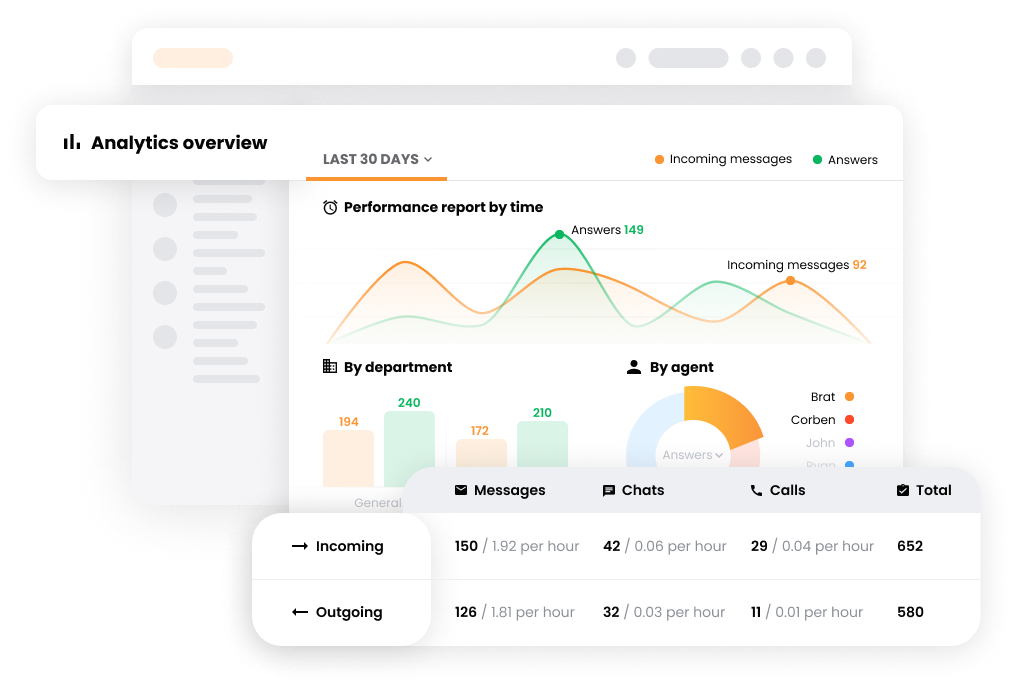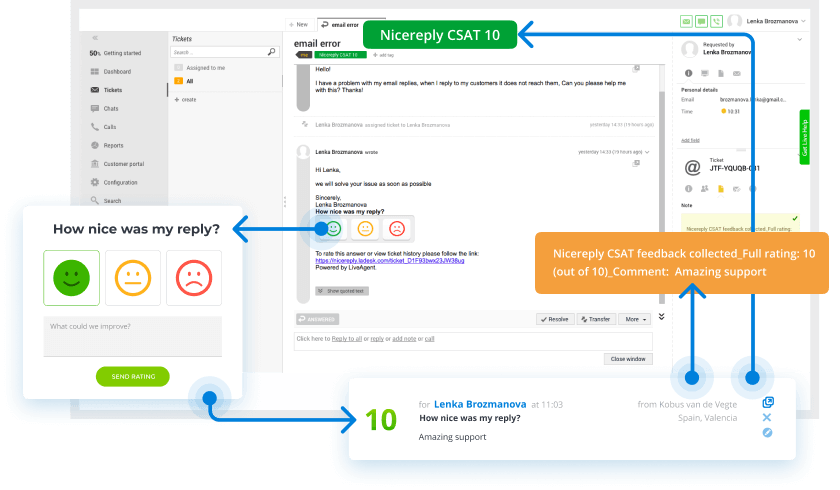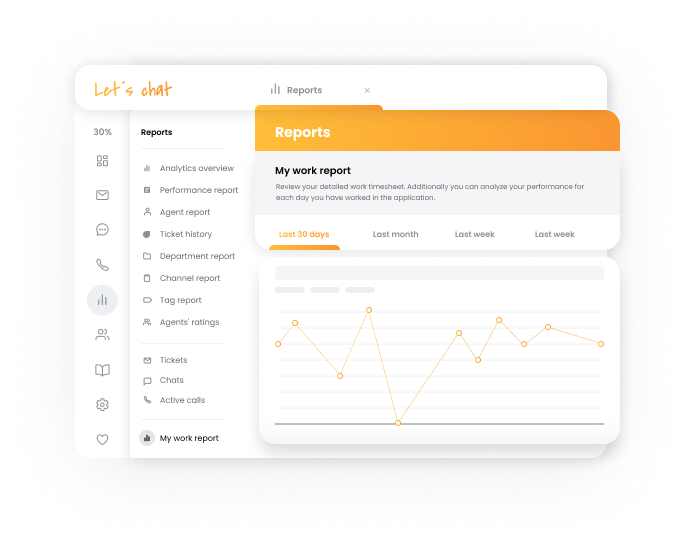In 2025, companies must weigh the pros and cons of sending their customer support operations overseas or to third-party providers. Understanding the landscape of customer service outsourcing is crucial for businesses looking to remain competitive.
Customer service outsourcing allows organizations to leverage specialized skills, access cutting-edge technologies, and provide multilingual support while potentially reducing costs. However, it can also introduce challenges such as communication gaps and control over service quality that cannot be overlooked. With platforms like LiveAgent available to streamline operations, understanding these dynamics will be vital for any business aiming to enhance customer experience.
This article will explore the advantages and disadvantages of customer service outsourcing as we move into 2025, outlining key factors businesses should consider before taking the plunge. We will also look at future trends and the innovations that may shape the industry, providing insights into how tools like LiveAgent can help navigate this evolving landscape.
Table of Contents
What is customer service outsourcing?
Customer service outsourcing is when companies hire third-party firms to handle customer service tasks. These tasks include managing inquiries, providing technical support, and fostering customer relationships. Businesses have options like hiring individual agents on platforms such as UpWork and Fiverr or partnering with specialized Business Process Outsourcing (BPO) companies.
Outsourcing has evolved to offer multichannel support. It includes ticketing systems, phone calls, emails, and social media interactions. An efficient outsourced team uses AI and automation for simple inquiries, freeing human agents to focus on complex issues.
Here’s a quick comparison of outsourcing options:
| Option | Benefit |
|---|---|
| Individual Agents | Cost-effective for small tasks |
| BPO Companies | Comprehensive and scalable support |
Companies often turn to outsourcing when their support needs outgrow their internal teams, a common scenario for growing startups. Outsourcing allows these businesses to leverage specialized expertise and maintain operational efficiency. It also helps them meet customer expectations and improves the customer experience.
Tools like LiveAgent can enhance these operations by offering features such as ticket management and multichannel communications. This software helps outsourced teams provide seamless and efficient customer support solutions.
Advantages of customer service outsourcing
Outsourcing customer service brings many benefits to businesses. Companies can save money and improve customer satisfaction by using specialized service providers. These providers offer advanced tools and global talent that an in-house team might lack. Additionally, outsourcing allows companies to focus on their core activities while ensuring exceptional customer support.
Access to advanced technologies
Outsourced customer service providers use cutting-edge technologies to offer efficient support. AI-powered solutions answer simple queries quickly, freeing up agents to tackle complex issues. Access to data analytics tools empowers agents to understand customer trends and improve service quality. With video support and sophisticated helpdesk software like LiveAgent, agents can troubleshoot effectively, enhancing customer interactions. By outsourcing, businesses benefit from technologies they might not invest in otherwise.

24/7 support availability
Outsourcing ensures that customer support is available 24/7. This round-the-clock service enhances customer satisfaction by allowing customers to reach help anytime, anywhere. With outsourced providers, companies can handle inquiries at all hours and reduce waiting times. This constant availability leads to consistent and reliable interactions, crucial in today’s global market. Businesses can maintain focus on their core operations while ensuring seamless customer support day and night.
Enhanced customer experience
Customer care outsourcing prioritizes delivering top-notch experiences. With skilled professionals managing customer interactions, response times improve, and personalization increases. Outsourcing providers employ experts in communication and problem-solving. This focus on quality enhances customer satisfaction and reinforces brand loyalty. As outsourced teams handle fluctuating call volumes effectively, businesses benefit from improved customer experiences, solidifying their reputation in the industry.
Multilingual support options
Multilingual support through outsourcing allows businesses to communicate in their customers’ preferred languages. This service increases satisfaction and brand loyalty by reducing communication barriers. Global companies especially benefit from reaching diverse markets without hiring in-house staff for each language. Access to multilingual agents ensures customers feel confident and understood in their interactions, making it a strategic move for businesses aiming to serve a wide-ranging clientele.

Cost savings and scalability
Outsourcing customer service can significantly reduce costs. It is often cheaper than maintaining an in-house team, especially when considering labor and infrastructure expenses. Outsourcing providers offer scalable solutions, allowing businesses to adjust support levels based on demand without constant hiring or layoffs. Leveraging economies of scale, these providers offer cost-effective services by handling high volumes efficiently. Outsourcing frees up resources for companies to focus on their primary goals while maintaining quality support.
Specialized expertise and skills
Outsourcing gives businesses access to experts with specialized knowledge in customer support. These professionals resolve issues efficiently, using advanced tools and data analytics to enhance service quality. Dedicated teams are trained across all customer channels, improving brand loyalty and competitive advantage. By focusing solely on customer service, outsourced agents ensure consistent delivery of high-quality support. Continuous training in communication and product knowledge further maintains excellence in service.
Enhance Your Outsourced Support
Empower your outsourced team with LiveAgent's all-in-one customer service software. Deliver seamless support from anywhere!
Disadvantages of Customer Service Outsourcing
While outsourcing customer service offers several advantages, it is essential to acknowledge the potential drawbacks and challenges that can arise from this decision. One of the primary concerns is the quality of service, as businesses may find it difficult to maintain consistent standards and ensure that the outsourced team embodies the brand’s voice and values. This inconsistency can lead to a disjointed customer experience, which may ultimately affect customer satisfaction and loyalty. Additionally, businesses may face challenges related to cultural and language differences that can hinder communication and understanding between support agents and customers.
Another significant concern is data security, especially in an age where protecting customer information is paramount. Outsourcing customer service often involves sharing sensitive data with third-party providers, which raises the risk of data breaches or mishandling.
Companies must also consider the potential loss of the personal touch in customer interactions, as customers may prefer speaking with representatives who understand their specific context and needs. Therefore, businesses must weigh these risks carefully and implement strategies to mitigate them while deciding whether to outsource their customer service.
Potential loss of control over service quality
When a company outsources customer service, it often experiences a loss of control. This is because daily interactions are managed by external agents rather than the in-house team. This can lead to inconsistencies in how the brand is represented. For instance, outsourced teams might struggle with cultural and language barriers, resulting in misunderstandings. Businesses must employ robust quality assurance measures to ensure that the outsourced company’s performance meets brand standards.
Utilizing tools like LiveAgent can help maintain quality by enabling businesses to monitor communications and ensure brand consistency.
Communication challenges
Effective communication is crucial when outsourcing customer services. Misunderstandings can occur if outsourced representatives do not fully comprehend the business’s operations. Additionally, the transition to AI-driven support can make customers feel disconnected. Implementing software solutions like LiveAgent can enhance communication by providing streamlined channels for issue resolution and maintaining a consistent brand voice. This ensures that all customer interactions align with the company’s values and offerings.
Data security risks
Data security is a top concern with customer service outsourcing. Businesses must ensure that their outsourcing partners have stringent security measures to protect customer information. This includes evaluating potential providers based on their data security practices. Choosing a reputable service with a proven track record is essential to safeguarding data. LiveAgent’s secure platform can support businesses by maintaining confidentiality and data integrity through advanced security features, reducing the risk of data breaches.
Risk of poor customer satisfaction
Outsourcing can inadvertently lead to poor customer satisfaction. This may occur if there is reduced control over service quality or if cultural barriers compromise the clarity of interactions. Customers may also feel the absence of a personal touch with outsourced agents. It’s vital to monitor key performance indicators (KPIs) closely, such as Average Handle Time and Resolution Time, to ensure timely responses to customer inquiries. LiveAgent can aid in tracking these metrics, helping to deliver a consistent level of service and thus maintaining customer satisfaction.

While outsourcing customer service can be beneficial, it presents risks like loss of control, communication issues, security concerns, and potential customer dissatisfaction. Businesses must weigh these factors and consider implementing comprehensive solutions like LiveAgent to mitigate these challenges and maintain operational efficiency.
Factors to consider before outsourcing
Outsourcing customer service can greatly enhance a company’s efficiency and reduce costs. However, businesses must approach this decision with care. It’s essential to conduct thorough due diligence on potential outsourcing partners. Look for those whose experience and cultural fit align with your business needs.
Consider the balance between cost savings and the potential for less personalized service when outsourcing. Begin by establishing clear communication channels and scheduling regular meetings to maintain quality and train agents. This helps companies retain control over their brand’s representation and manage customer interactions more effectively.
Assessing your specific needs
Before diving into outsourcing, assess your specific needs. Start by identifying the type of support you require, such as operational hours and language capabilities, to ensure they align with your business goals. Evaluate the technology, infrastructure, and training programs of potential partners.
Ensure they can represent your brand effectively. Consider a trial period to test service quality before fully committing. Make sure the provider can scale with your business for future growth. An understanding of your multichannel requirements will help you find an outsourcing company that offers seamless, efficient customer support solutions.
Evaluating potential partners
When evaluating potential partners, assess their expertise and industry experience. Ensure they have robust quality control processes to maintain your brand’s voice and quality. Security should be a top priority, with data protection measures in place. Look for testimonials and client references to check reliability. Clearly outline your service expectations and key performance indicators (KPIs) to ensure alignment with your business objectives.
Setting clear performance metrics
Outsourcing providers often use metrics such as Net Promoter Scores and resolution times to gauge effectiveness. Implement performance monitoring systems to track service metrics. This enhances service delivery and customer satisfaction. Outsourcing providers offer customized reporting on customer interactions. These insights can improve strategic decision-making regarding performance metrics. Use gathered data to categorize support cases and identify FAQs, increasing customer assistance efficiency.

Ensuring adherence to quality standards
To maintain quality standards with outsourcing, implement rigorous quality assurance practices. Conduct spot-checks on quality reviews to confirm adherence to standards. Use QA tools, like those with AI, to evaluate interactions and ensure consistent service. Establish clear communication with providers to monitor quality assurance and training procedures. Select partners with industry expertise and maintain visibility through frequent reports and call recordings.
Monitoring and managing outsourced services
Continuous monitoring and improvement are key to maximizing outsourcing benefits. Establish measurable KPIs like average response time and customer satisfaction scores. Implement feedback loops to address issues and ensure service goals are met. Regular performance reviews help the outsourced team meet or exceed expectations. A proactive management approach maintains high service quality and enhances brand reputation.

LiveAgent offers features such as multilingual support and advanced reporting for performance monitoring. These features can be crucial for seamless integration and enhancing overall customer service outsourcing. Consider LiveAgent when looking for solutions that align with strategic outsourcing objectives.
Future of customer service outsourcing
One major advantage is access to specialized expertise. Third-party providers bring advanced technology and streamlined processes, translating into faster response times and superior service quality. As companies expand into new markets, managing customer care becomes increasingly complex. Outsourcing helps maintain high service levels during such transitions. However, choosing the right outsourcing partner is crucial. A good partner will enhance the customer experience, while a poor choice might lead to dissatisfaction.
Trends Shaping the Industry in 2025
In 2025, the landscape of customer service will continue to transform with several trends leading the way. Personalization is at the forefront, highlighting the need for customized interactions to boost customer loyalty. Companies are increasingly adopting omnichannel support. This trend ensures seamless experiences, whether customers connect through email, social media, chat, or voice.
There’s also a growing demand for using customer insights and analytics. These tools allow businesses to tailor their services and offer proactive customer support. The reliance on traditional call centers is declining. Digital methods and self-service options are gaining popularity due to their convenience. This shift not only benefits customers but also drives efficiency for businesses.
The customer service outsourcing industry is projected to witness substantial growth. Its value is expected to rise from $79.4 billion in 2023 to approximately $205 billion by 2032. This increase underscores the cost-effectiveness of outsourcing and its vital role in business operations.
Innovations in customer support solutions
Innovations are crucial for advancing customer support solutions. One major innovation is the adoption of AI-powered tools. These tools manage customer queries efficiently and provide smooth interaction experiences. Outsourcing gives businesses access to a wide range of technologies, including CRM systems and data analytics. These resources are essential for improving customer engagement and retention.
Another key trend is personalized interactions. By focusing on individual customer needs, businesses can improve satisfaction and loyalty. Automated chatbots and virtual assistants are also becoming common. They handle simple inquiries, freeing human agents to focus on complex issues. Additionally, embracing omnichannel solutions ensures a consistent experience across all communication platforms.
Enhance Your Outsourced Support
Empower your outsourced team with LiveAgent's all-in-one customer service software. Deliver seamless support from anywhere!
Conclusion
Outsourcing customer service offers many benefits for businesses aiming to enhance their operations. By partnering with third-party providers, companies can significantly reduce operational costs while taking advantage of the latest technology. This allows businesses to focus on core functions and strategic goals rather than managing daily customer service tasks.
Moreover, using outsourced customer support agents offers scalable solutions. Businesses can adjust easily to changes in inquiry volumes, allowing for flexible and efficient operation of their support services. With LiveAgent, you can streamline and manage these operations effortlessly, thanks to its robust features designed for customer support.
We encourage you to try LiveAgent’s free 30-day trial to experience these benefits firsthand. Engaging outsourced support might just be the strategic step your business needs to meet customer expectations and achieve operational excellence.
Share this article
Enhance your customer service emails with LiveAgent's ready-made templates. Save time, reduce errors, and ensure consistent messaging across various scenarios—from handling angry customer responses to issuing refunds. Elevate your support team's efficiency and maintain your brand voice effortlessly. Try LiveAgent for free and transform your customer interactions today!
Provide excellent customer service.
Discover unparalleled customer support with LiveAgent's all-in-one software. Benefit from 24/7 service, a free trial without a credit card, and seamless integration across 130+ ticketing features. Enhance your business with fast setup, AI assistance, live chat, and more. Choose LiveAgent for exceptional service and satisfied customers.
Explore the comprehensive guide on contact centers in 2024, detailing their definition, types, trends, and benefits. Discover the key differences between contact centers and call centers, and learn how they revolutionize customer service with advanced technology and multichannel communications. Dive into future innovations and metrics to measure success, and see why understanding contact centers is essential for business success. Start your journey to improved customer interaction today!
Discover the essential guide to creating an efficient FAQ page for your business with our copy-paste templates. Empower your customers with self-service options and reduce the burden on your support team. Learn how to set up a comprehensive FAQ page in 4 simple steps and explore common examples to get started. Visit now and enhance your customer service strategy!

 Български
Български  Čeština
Čeština  Dansk
Dansk  Deutsch
Deutsch  Eesti
Eesti  Español
Español  Français
Français  Ελληνικα
Ελληνικα  Hrvatski
Hrvatski  Italiano
Italiano  Latviešu
Latviešu  Lietuviškai
Lietuviškai  Magyar
Magyar  Nederlands
Nederlands  Norsk bokmål
Norsk bokmål  Polski
Polski  Română
Română  Русский
Русский  Slovenčina
Slovenčina  Slovenščina
Slovenščina  简体中文
简体中文  Tagalog
Tagalog  Tiếng Việt
Tiếng Việt  العربية
العربية  Português
Português 







